Nearly 40% of dogs show signs of OA pain,1 but less than half are actually diagnosed2
Dogs with OA pain that are treated with NSAIDs receive ~60.5 days of therapy annually3
Osteoarthritis (OA) pain may be hard for dog owners to recognize. Use the resources on this page to educate your clients about OA and how it affects dogs, introduce them to Librela, and prepare them for follow-up appointments.
Nearly 40% of dogs show signs of OA pain,1 but less than half are actually diagnosed2
Dogs with OA pain that are treated with NSAIDs receive ~60.5 days of therapy annually3
These resources can help educate your clients about the signs and symptoms of canine OA pain before their appointment, or they can help guide conversations with dog owners in your clinic.



Help dog owners understand the signs of OA pain and treatment options available.
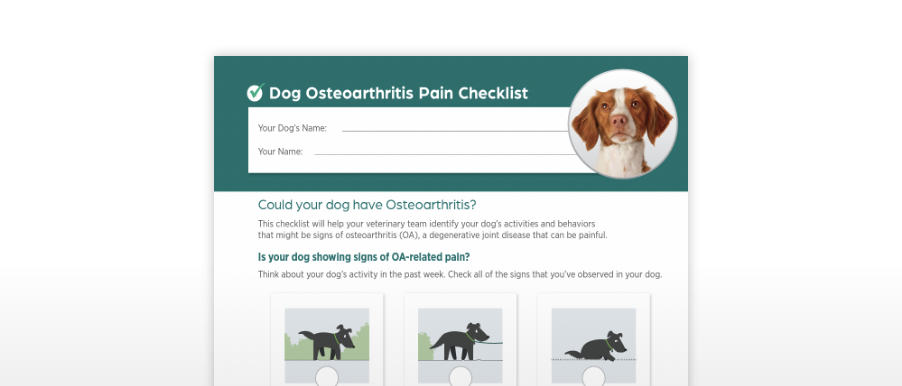


Print and hang up this poster about the signs of OA pain for dog owners to use right in your clinic.
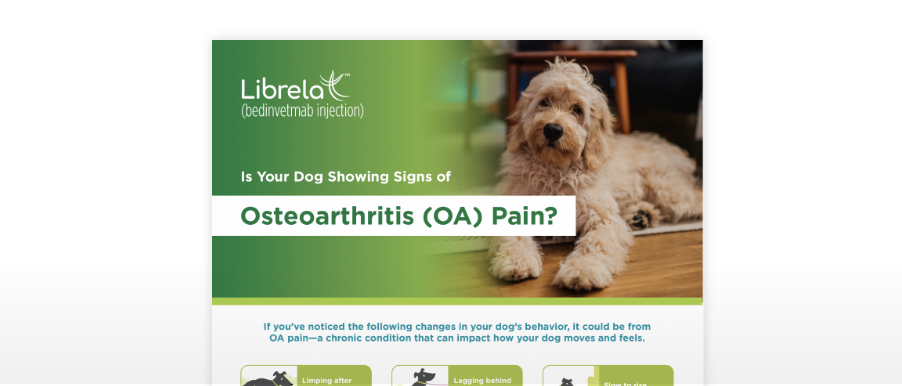


Communicate with dog owners about OA pain before they come in for an appointment. Attach the provided PDF to an email or follow the customizable email instructions.
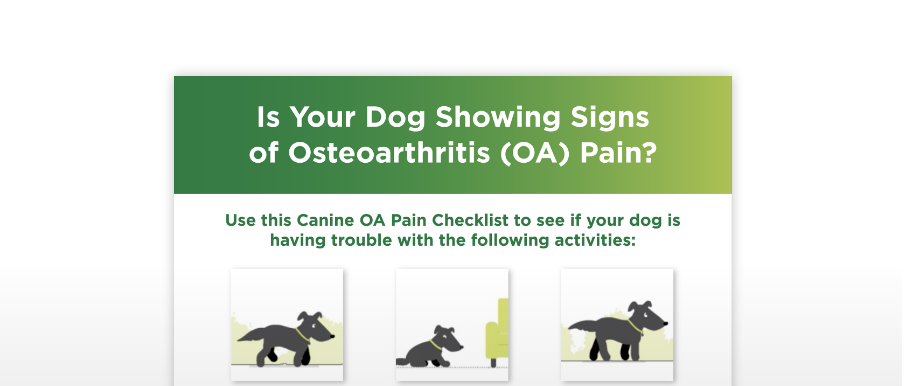


Give dog owners an idea of what canine OA pain may look like. Post this image to your social channels or follow the customizable post instructions.
Use these resources to guide conversations with dog owners about controlling canine OA pain with Librela and what to expect on their dog’s treatment journey.



Help dog owners understand the signs of OA pain and treatment options available.



Print out for use in your clinic or email your clients a 1-pager about the signs and symptoms of OA pain.



Send dog owners information about Librela and how it can control canine OA pain. Attach the provided PDF to an email or follow the customizable email instructions.



Show dog owners how Librela can help give their dogs with OA pain more days of play. Post this image to your social channels or follow the customizable post instructions.



Use this 1-pager to answer questions about Librela, help dog owners understand how Librela controls canine OA pain, and what to expect during treatment.
These resources can help you check in with your clients about their dog’s progress with Librela and make sure they’re making the most out of future appointments.
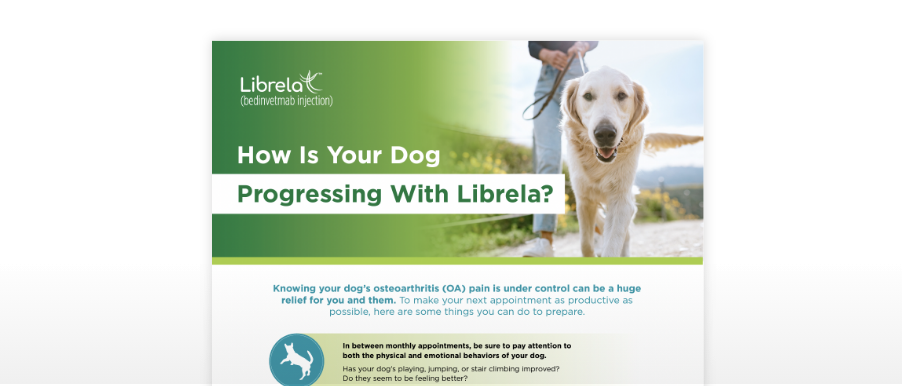


Send this email to your clients as a first check-in after initiating treatment with Librela and how they can prepare for follow-up appointments. Attach the provided PDF to an email or follow the customizable email instructions.
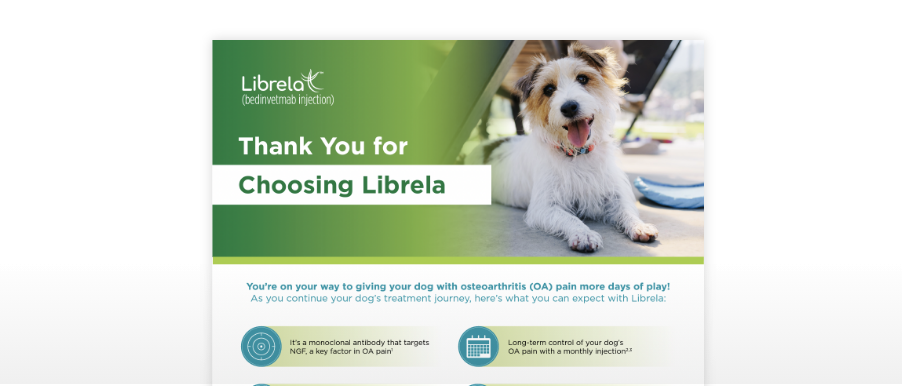


After 2-3 weeks, send your clients this email as an additional check-in to assess progress. Attach the provided PDF to an email or follow the customizable email instructions.
Remind dog owners to track their dog’s treatment progress and prepare for follow-up appointments. Post this image to your social channels or follow the customizable post instructions.
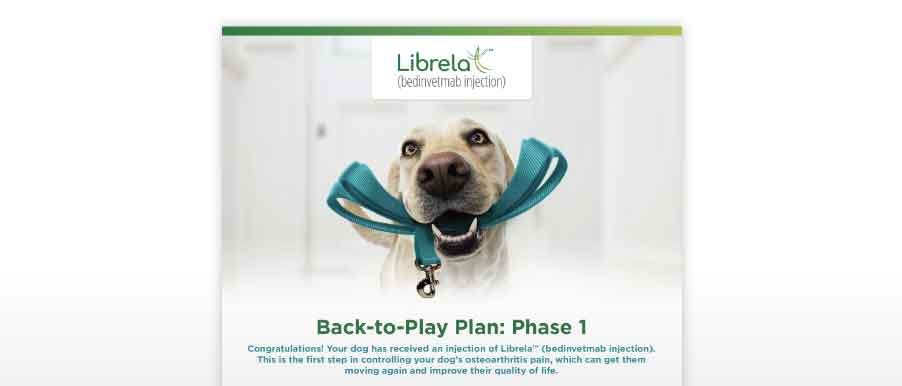


This back-to-play treatment sheet can help your clients learn about the phased approach to returning their dog to play during their treatment journey with Librela.
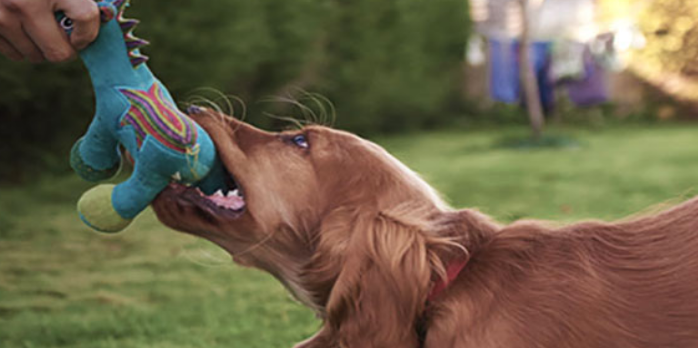


References:
All trademarks are the property of Zoetis Services LLC or a related company or a licensor unless otherwise noted.
© 2024 Zoetis Services LLC. All rights reserved. LIB-00011R4
IMPORTANT SAFETY INFORMATION:
See full Prescribing Information. For use in dogs only. Women who are pregnant, trying to conceive or breastfeeding should take extreme care to avoid self-injection. Hypersensitivity reactions, including anaphylaxis, could potentially occur with self-injection. LIBRELA should not be used in breeding, pregnant or lactating dogs. LIBRELA should not be administered to dogs with known hypersensitivity to bedinvetmab. The most common adverse events reported in a clinical study were urinary tract infections, bacterial skin infections and dermatitis.